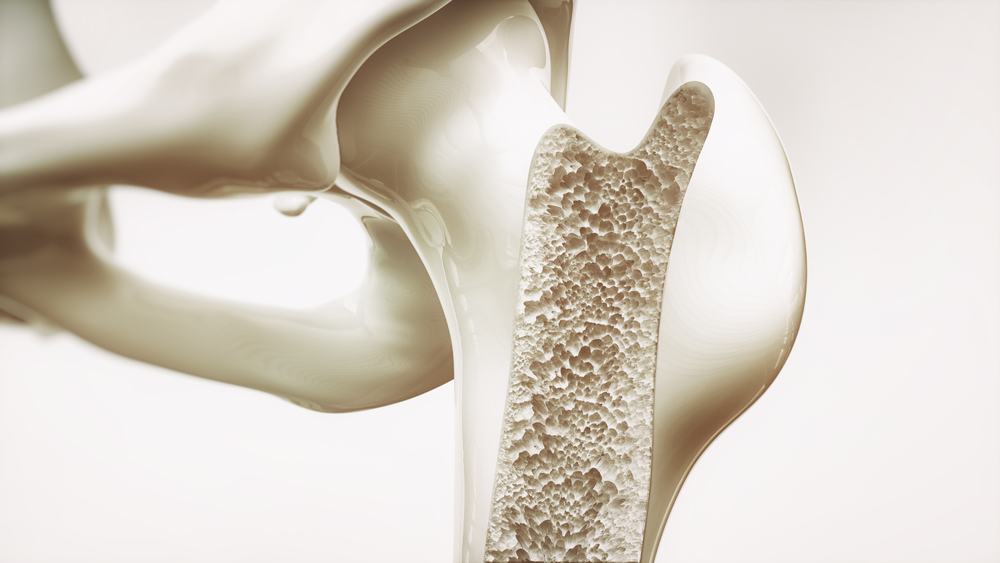Interventions in Childhood May Improve Adulthood Bone Health, Study Suggests

Adolescents with cerebral palsy have low bone mass, which significantly improves and is maintained during early adulthood, Australian researchers have found.
This suggests that cerebral palsy patients may benefit from early interventions to prevent bone mass loss, or improve bone metabolism, to optimize bone health from early childhood.
The study, “Longitudinal changes in bone density in adolescents and young adults with cerebral palsy: a case for early intervention,” was published in the journal Clinical Endocrinology.
Preserving bone and muscle health is a critical aspect of care regimens for people with cerebral palsy to maintain mobility and independence, the researchers said.
“As these individuals age, many become dependent on assistive devices and up to 75% of individuals lose their ability to mobilise,” they said.
Growing evidence has shown that adults with cerebral palsy are particularly vulnerable to osteoporosis, or low bone density, and fractures. This is due to their longer cumulative exposure to risk factors that lead to bone loss, and declining bone mass with age.
“However, it is unclear whether low bone mass in adults with CP is predominantly due to less bone accrual during childhood, earlier onset of bone loss or an accelerated rate of bone loss in adulthood compared with the general population,” the researchers said.
To learn more about bone health in this population, researchers at the tertiary hospital Monash Health in Victoria, Australia, conducted a longitudinal study in adolescents and young adults with cerebral palsy.
They reviewed the clinical records of 45 individuals with cerebral palsy, ages 10 to 36 at the first evaluation, who underwent more than one dual x-ray absorptiometry (DXA) scan — an imaging test that measures bone mineral density— from 2006 to March 2018.
A total 36 (80%) participants were non-ambulatory, and 14 (31.1%) required percutaneous endoscopic gastrostomy (PEG) feeding. Minimal trauma fracture was documented in 42.2% of participants, the majority (76.2%) involving the femur or tibia and fibula.
DXA scans showed that bone mineral density of the lumbar spine, femoral neck, total hip, and total body were lower than the mean value of the general population. Individuals younger than age 20 tended to have lower bone mineral density of the femoral neck and total hip than those older than age 20.
Bone age x-rays also showed that 10 of the 12 adolescents (ages younger than 20) included in the study had a mean delay in bone age of approximately 1.1 years compared with their healthy peers.
In general, the individuals with cerebral palsy achieved peak bone mass by their late 30s to early 40s, which remained stable thereafter.
Still, the group showed wide variations in bone mineral density changes, ranging from losses of 22% to gains of 38% per year. Individuals younger than age 20 showed a 4-8% increase in bone mineral density per year, while older patients showed just minimal changes.
Based on these findings, the team believes that “deficits in bone accrual earlier in life rather than bone loss in adolescence or early adulthood is the predominant cause of low bone mass in adults with cerebral palsy.”
As such, “timely pubertal induction is likely to be important to optimize bone health into adulthood,” they said.
Further analyzes revealed that a lower functional status — as measured by the gross motor functional classification scale (GMFCS) — had a small negative impact on bone mineral density over time. Meanwhile, supplements of vitamin D and each individual’s weight had an effect on bone mineral density changes throughout the year. However, these effects were “clinically unimportant.”
Females also showed greater increase in bone mineral density at most sites compared to males.
“Interventions during childhood such as improving muscle strength and mobility, optimizing nutritional and hormonal status, and judicious use of bisphosphonates are likely key to achieving optimal adult bone health,” the researchers concluded.


